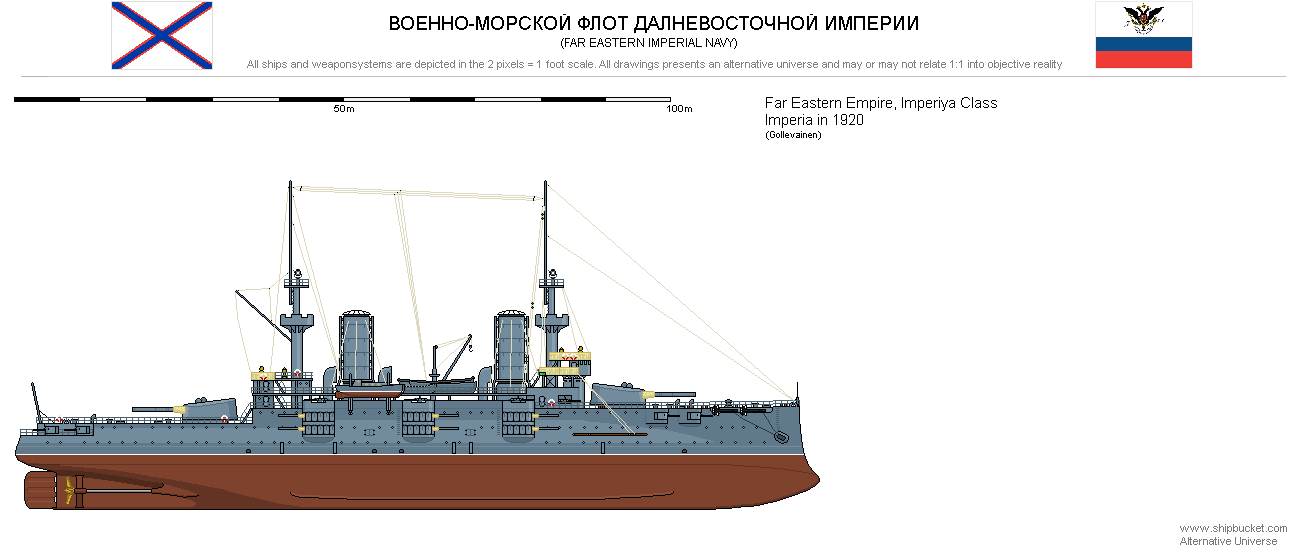Imperiya class Battleship
| Imperiya class Battleship | |
|---|---|
| Class overview | |
| Name | Imperiya class Battleship |
| Operators | Far Eastern Imperial Navy |
| Class before | Siyaniye class Battleship |
| Planned | 2 |
| Built | 2 |
| Active | 1 |
| Destroyed | 1 |
| General Characteristics | |
| Type | Battleship |
| Displacement |
|
| Length | 124.8 metres (409 ft) |
| Beam | 21.5 metres (71 ft) |
| Draught | 8.4 metres (28 ft) |
| Propulsion | 2 shafts, 2 VTE steam engines |
| Power |
|
| Speed | 18 kts |
| Range | 5500 nm at 10 kts |
| Complement | 780 |
| Armament |
|
| Armour |
|
Development
The follow-on class of the Siyaniye was essentially repeat of the earlier ship with main difference being the placement of secondary armament in casemates instead of turrets. This solution was based on the experience with the armored cruisers in the Far Eastern-Spanish war where the secondary turrets were considered to be too slow to react against faster enemy light units. 12 152mm guns were placed in two-level casemates, similar as in the Kuril class cruisers.
Both ships were barely introduced to the 1st Squadron when the Far Eastern-Japanese war broke out. Imperiya served as a flagship for Admiral Vitgeft and was heavily damamged in the first battle of Tsusima straights in 1904. Imperiya took hits from japanese battleships that killed Vitgeft and damaged the steering. It was only saved by the "Charge of Siyaniye" which drew fire away from the damaged flagship. Imperiya managed to escape to German port of Tsingtau in which she remained interned for the rest of the war. Monarkhia assumed the role of flagship and was sunk at the second battle of Tsusima.
Ships in class
| Name | Builder | Laid down | Launch Date | Entered Service | Fate |
|---|---|---|---|---|---|
| Imperiya | Voenno-Morskoy verf, Dalny | February 1900 | April 1902 | February 1904 | Extant in 1920 |
| Monarkhiya | Admiralteyskiye verf, Vladivostok | February 1900 | April 1902 | March 1904 | Sunk in 1905 |
